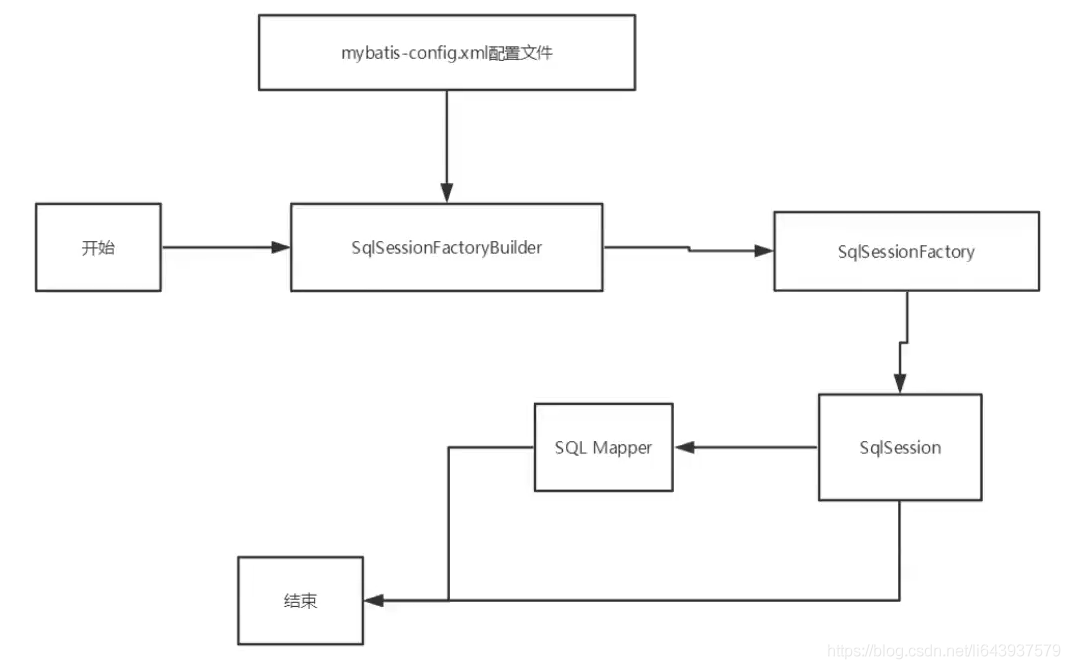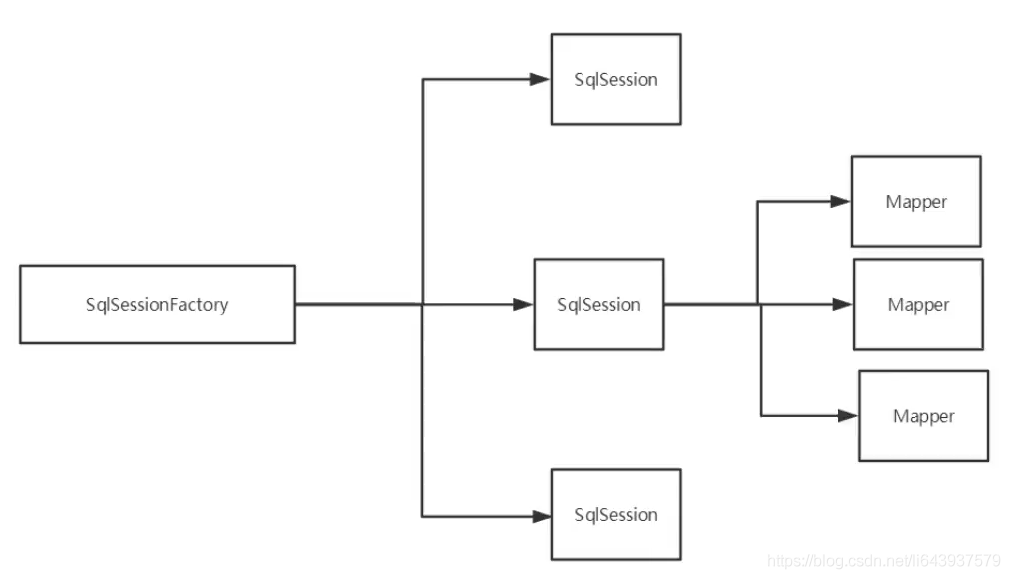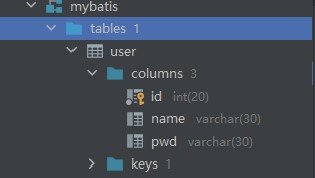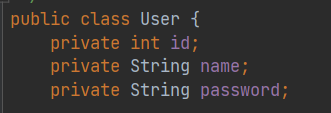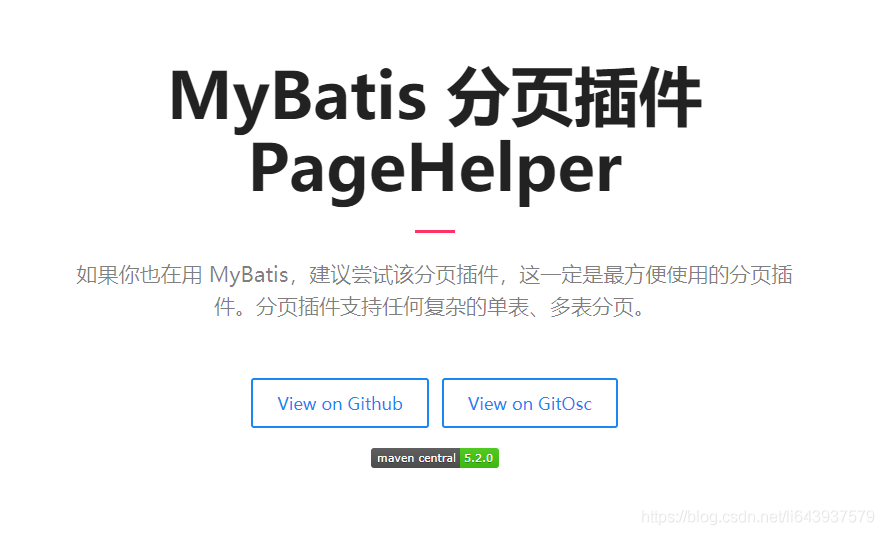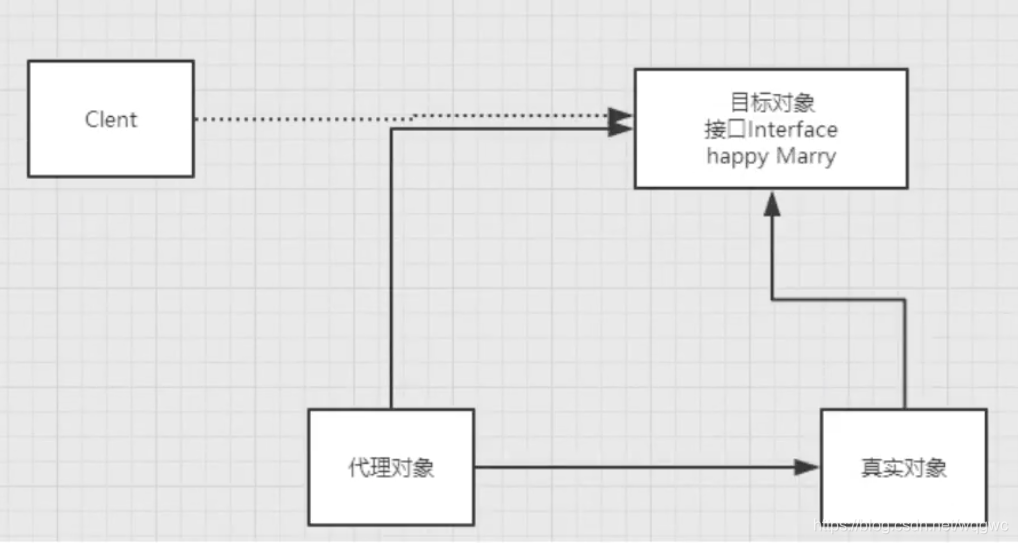Mybatis
学习mybatis时的上课笔记
1. 准备工作 1.1 Sql建表语句 create database `mybatis`; use `mybatis`; create table `user`( `id` int(20) not null primary key, `name` varchar(30) default null, `pwd` varchar(30) default null )engine=innodb default charset=utf8; insert into `user`(`id`,`name`,`pwd`) values (1,'狂神','123456'), (2,'张三','123456'), (3,'李四','123890') select * from `user`;
1.2 mapper.xml模板 <?xml version="1.0" encoding="UTF8" ?> <!DOCTYPE mapper PUBLIC "-//mybatis.org//DTD Config 3.0//EN" "http://mybatis.org/dtd/mybatis-3-mapper.dtd" > <mapper > </mapper >
1.3 mybatis-config.xml模板 <?xml version="1.0" encoding="UTF8" ?> <!DOCTYPE configuration PUBLIC "-//mybatis.org//DTD Config 3.0//EN" "http://mybatis.org/dtd/mybatis-3-config.dtd" > <configuration > <properties resource ="db.properties" > <property name ="username" value ="root" /> <property name ="password" value ="920769" /> </properties > <settings > <setting name ="logImpl" value ="STDOUT_LOGGING" /> </settings > <typeAliases > <package name ="com.kuang.pojo" /> </typeAliases > <environments default ="development" > <environment id ="development" > <transactionManager type ="JDBC" /> <dataSource type ="POOLED" > <property name ="driver" value ="${driver}" /> <property name ="url" value ="${url}" /> <property name ="username" value ="${username}" /> <property name ="password" value ="${password}" /> </dataSource > </environment > </environments > <mappers > <mapper class ="com.kuang.dao.TeacherMapper" /> <mapper class ="com.kuang.dao.StudentMapper" /> </mappers > </configuration >
2.写mybatis程序步骤 1.写MybatisUtils工具类 public class MybatisUtils { private static SqlSessionFactory sqlSessionFactory; static { try { String resource = "mybatis-config.xml" ; InputStream inputStream = Resources.getResourceAsStream(resource); sqlSessionFactory = new SqlSessionFactoryBuilder ().build(inputStream); } catch (Exception e) { e.printStackTrace(); } } public static SqlSession getSqlSession () { return sqlSessionFactory.openSession(); } }
2.写mybatis-config.xml配置文件 <?xml version="1.0" encoding="UTF-8" ?> <!DOCTYPE configuration PUBLIC "-//mybatis.org//DTD Config 3.0//EN" "http://mybatis.org/dtd/mybatis-3-config.dtd" > <configuration > <environments default ="development" > <environment id ="development" > <transactionManager type ="JDBC" /> <dataSource type ="POOLED" > <property name ="driver" value ="com.mysql.jdbc.Driver" /> <property name ="url" value ="jdbc:mysql://localhost:3306/mybatis?useSSL=true& useUnicode=true& characterEncoding=UTF-8" /> <property name ="username" value ="root" /> <property name ="password" value ="920769" /> </dataSource > </environment > </environments > <mappers > <mapper resource ="com/kuang/dao/UserMapper.xml" /> </mappers > </configuration >
3.写实体类 public class User { private int id; private String name; private String pwd; public User () { } public User (int id, String name, String pwd) { this .id = id; this .name = name; this .pwd = pwd; } public int getId () { return id; } public void setId (int id) { this .id = id; } public String getName () { return name; } public void setName (String name) { this .name = name; } public String getPwd () { return pwd; } public void setPwd (String pwd) { this .pwd = pwd; } @Override public String toString () { return "User{" + "id=" + id + ", name='" + name + '\'' + ", pwd='" + pwd + '\'' + '}' ; } }
4.写UerDao接口(DAO/Mapper) public interface UserDao { List<User> getUserList () ; }
5.写UserMapper.xml <?xml version="1.0" encoding="UTF-8" ?> <!DOCTYPE mapper PUBLIC "-//mybatis.org//DTD Mapper 3.0//EN" "http://mybatis.org/dtd/mybatis-3-mapper.dtd" > <mapper namespace ="com.kuang.dao.UserDao" > <select id ="getUserList" resultType ="com.kuang.pojo.User" > select * from mybatis.user </select > </mapper >
6.写测试类(UserTest) public class UserDaoTest { @Test public void test () { SqlSession sqlSession = null ; try { sqlSession = MybatisUtils.getSqlSession(); UserDao userDao = sqlSession.getMapper(UserDao.class); List<User> userList = userDao.getUserList(); for (User user : userList) { System.out.println(user); } }catch (Exception e){ System.out.println( e); }finally { sqlSession.close(); } } }
3.CRUD(增删改查) 3.1、namespace
namespace中的包名要和Dao/mapper接口的报名一致
3.2、select 语句 选择,查询语句;
id:就是对应的namespace中的方法名;
resultType:Sql语句执行的返回值!
parameterType:参数类型!
编写接口
public interface UserMapper { List<User> getUserList () ; User getUserById (int id) ; int insertUser (User user) ; int updateUser (User user) ; int deleteUser (int id) ; }
编写对应的mapper中的sql语句
<select id ="getUserList" resultType ="com.kuang.pojo.User" > select * from mybatis.user </select > <select id ="getUserById" parameterType ="int" resultType ="com.kuang.pojo.User" > select * from mybatis.user where id = #{id} </select >
测试
@Test public void getUserListTest () { SqlSession sqlSession = null ; try { sqlSession = MybatisUtils.getSqlSession(); UserMapper userMapper = sqlSession.getMapper(UserMapper.class); List<User> userList = userMapper.getUserList(); for (User user : userList) { System.out.println(user); } }catch (Exception e){ System.out.println( e); }finally { sqlSession.close(); } } @Test public void getUserById () { SqlSession sqlSession = MybatisUtils.getSqlSession(); UserMapper userMapper = sqlSession.getMapper(UserMapper.class); User userById = userMapper.getUserById(3 ); System.out.println(userById); sqlSession.close(); }
3.3、Insert语句
编写接口
public interface UserMapper { int insertUser (User user) ; }
编写对应的mapper中的sql语句
<insert id ="insertUser" parameterType ="com.kuang.pojo.User" > insert into mybatis.user(id, name, pwd) values(#{id}, #{name}, #{pwd}) </insert >
测试
@Test public void insertUserTest () { User user = new User (4 , "袁光斌" , "666666" ); SqlSession sqlSession = MybatisUtils.getSqlSession(); UserMapper userMapper = sqlSession.getMapper(UserMapper.class); int i = userMapper.insertUser(user); if (i > 0 ){ System.out.println("插入成功" ); } sqlSession.commit(); sqlSession.close(); }
3.4、update语句
编写接口
public interface UserMapper { int updateUser (User user) ; }
编写对应的mapper中的sql语句
<update id ="updateUser" parameterType ="com.kuang.pojo.User" > update mybatis.user set name=#{name},pwd=#{pwd} where id=#{id}; </update >
测试
@Test public void updateUserTest () { User user = new User (4 , "袁光斌" , "233333" ); SqlSession sqlSession = MybatisUtils.getSqlSession(); UserMapper userMapper = sqlSession.getMapper(UserMapper.class); int i = userMapper.updateUser(user); System.out.println(i); sqlSession.commit(); sqlSession.close(); }
3.5、delete语句
编写接口
public interface UserMapper { List<User> getUserList () ; User getUserById (int id) ; int insertUser (User user) ; int updateUser (User user) ; int deleteUser (int id) ; }
编写对应的mapper中的sql语句
<delete id ="deleteUser" parameterType ="int" > delete from mybatis.user where id=#{id} </delete >
测试
@Test public void deleteUserTest () { SqlSession sqlSession = MybatisUtils.getSqlSession(); UserMapper userMapper = sqlSession.getMapper(UserMapper.class); int i = userMapper.deleteUser(4 ); System.out.println(i); sqlSession.commit(); }
3.6、注意点 ==增删改(需要修改数据库数据的操作),都需要提交事物==
3.7、万能Map 假设,我们的实体类,或者数据库中的表,字段或者参数过多,==我们应当考虑使用Map!(局部更新,效率更高)==
User insertUser2 (Map<String,Object> map) ;
<insert id ="insertUser" parameterType ="map" > insert into mybatis.user(id, name,) values(#{userid}, #{userName}) </insert >
@Test public void insertUserTest2 () { SqlSession sqlSession = MybatisUtils.getSqlSession(); UserMapper userMapper = sqlSession.getMapper(UserMapper.class); HashMap<String, Object> map = new HashMap <>(); map.put("userId" ,5 ); map.put("userName" ,"hello" ); userMapper.insertUser2(map); sqlSession.close(); }
Map传递参数,直接在sql中取出key即可!【parameterType=“map”】
对象传递参数,直接在sql中取对象的属性即可!【parameterType=“Object”】
只有一个基本类型参数的情况下,可以直接在sql中取到!
多个参数用Map,或者注解!
3.8 模糊查询 模糊查询怎么写?
java代码执行的时候,传递通配符% %
List<User> userList = mapper.getUserLike("%李%" );
<select id ="getUserLike" resultType ="com.kuang.pojo.User" > select * from mybatis.user where name like #{value} </select >
2. 在sql拼接中使用通配符!
x 1List<User> userList = mapper.getUserLike("李" );
<select id ="getUserLike" resultType ="com.kuang.pojo.User" > select * from mybatis.user where name like "%"#{value}"%" </select >
4、配置解析 4.1、核心配置文件
mybatis-config.xml
Mybatis的配置属性文件包含了深深影响Mybatis行为的设置和属性信息
configuration(配置) properties(属性) settings(设置) typeAliases(类型别名) typeHandlers(类型处理器) objectFactory(对象工厂) plugins(插件) environments(环境配置) environment(环境变量) transactionManager(事务管理器) dataSource(数据源) databaseIdProvider(数据库厂商标识) mappers(映射器)
4.2、配置环境(environments) MyBatis 可以配置成适应多种环境
不过要记住:尽管可以配置多个环境,但每个 SqlSessionFactory 实例只能选择一种环境。
学会使用配置多套运行环境!
4.3、属性(properties) 我们可以通过properties属性来实现引用配置文件
db.properties
driver =com.mysql.jdbc.Driver url =jdbc:mysql://localhost:3307/mybatis?useSSL=true&useUnicode=true&characterEncoding=UTF-8 username =root password =920769
在核心配置文件中映入
<properties resource ="db.properties" > <property name ="username" value ="root" /> <property name ="pwd" value ="123123" /> </properties >
可以直接引入外部文件
可以在其中增加一些属性配置
如果两个文件有同一个字段,优先使用外部配置文件的!
4.4、类型别名(typeAliases)
类型别名是为Java类型设置一个短的名字。
存在的意义仅在于用来减少类完全限定名的冗余。
<typeAliases > <typeAlias type ="com.kuang.pojo.User" alias ="User" /> </typeAliases >
也可以指定一个包名,MyBatis会在包名下面搜索需要的JavaBean,比如:扫描实体类的包,它的==默认别名就为这个类的类名,首字母小写==!
<typeAliases > <package name ="com.kuang.pojo" /> </typeAliases >
在实体类比较少的时候,使用第一种方式。
@Alias("user") public class User {}
4.5、设置(settings) 这是MyBatis中极为重要的调整设置,它们会改变MyBatis的运行时行为。
4.6、其他配置
typeHandlers(类型处理器)
objectFactory(对象工厂)
plugins(插件)
mybatis-generator-core
mybatis-plus
通用mapper
4.7、映射器(mappers) MapperRegistry:注册绑定我们的Mapper文件;
方式一:【推荐使用】
<mappers > <mapper resource ="com/kuang/dao/UserMapper.xml" /> </mappers >
方式二:使用class文件绑定注册
<mappers > <package name ="com.kuang.dao" /> </mappers >
注意点:
接口和它的Mapper配置文件必须同名!
接口和它的Mapper配置文件必须在同一个包下
方式三:使用扫描包进行注入绑定
<mappers > <package name ="com.kuang.dao" /> </mappers >
注意点:
接口和它的Mapper配置文件必须同名!
接口和它的Mapper配置文件必须在同一个包下
4.8、生命周期和作用域 生命周期和作用域是至关重要的,因为错误的使用会导致非常严重的并发问题 。
SqlSessionFactoryBuilder:
一旦创建了 SqlSessionFactory,就不再需要它了。
局部变量
public class MybatisUtils { private static SqlSessionFactory sqlSessionFactory; static { try { String resource = "mybatis-config.xml" ; InputStream inputStream = Resources.getResourceAsStream(resource); sqlSessionFactory = new SqlSessionFactoryBuilder ().build(inputStream); } catch (Exception e) { e.printStackTrace(); } } public static SqlSession getSqlSession () { return sqlSessionFactory.openSession(); } }
SqlSessionFactory:
说白就是可以想象为:==数据库连接池 ==。
SqlSessionFactory 一旦被创建就应该==在应用的运行期间一直存在 ==,==没有任何理由丢弃它或重新创建另一个实例 ==。
SqlSessionFactory 的最佳作用域是应用作用域。
最简单的就是使用单例模式 或者静态单例模式。
SqlSession:
==连接到连接池的一个请求! ==
SqlSession 的实例不是线程安全的,因此是不能被共享的,所以它的最佳的作用域是请求或方法作用域。
用完后需要赶紧关闭,否则资源被占用!
5、解决属性名和字段名不一致的问题 5.1、问题 数据库中的字段
新建一个项目,拷贝之前的,测试实体类字段不一致的情况
测试出现问题
解决方法:
<select id ="getUserById" parameterType ="int" resultType ="com.kuang.pojo.User" > select id,name,pwd as password from mybatis.user where id = #{id} </select >
5.2、resultMap 结果集映射
id name pwd id name password
<resultMap id ="UserMap" type ="User" > <result column ="pwd" property ="password" /> </resultMap > <select id ="getUserById" resultMap ="UserMap" > select * from mybatis.user where id=#{id} </select >
resultMap 元素是 MyBatis 中最重要最强大的元素。
ResultMap 的设计思想是,对简单的语句做到零配置,对于复杂一点的语句,只需要描述语句之间的关系就行了。
ResultMap 的优秀之处——你完全可以不用显式地配置它们。
如果这个世界总是这么简单就好了。
6、日志 6.1、日志工厂 如果一个数据库操作出现了异常,我们需要排错。日志就是最好的助手!
SLF4J
LOG4J 【掌握】
LOG4J2
JDK_LOGGING
COMMONS_LOGGING
STDOUT_LOGGING【掌握】
NO_LOGGING
在Mybatis中具体使用哪一个日志实现,在设置中设定!
==STDOUT_LOGGING 标准日志输出==
<settings > <setting name ="logImpl" value ="STDOUT_LOGGING" /> </settings >
6.2、Log4j 什么是Log4j?
Log4j是Apache的一个开源项目,通过使用Log4j,我们可以控制日志信息输送的目的地是控制台、文件、GUI组件
我们也可以控制每一条日志的输出格式;
通过定义每一条日志信息的级别,我们能够更加细致地控制日志的生成过程。
可以通过一个配置文件来灵活地进行配置,而不需要修改应用的代码
6.1.先导入log4j的包 <dependency > <groupId > log4j</groupId > <artifactId > log4j</artifactId > <version > 1.2.17</version > </dependency >
6.2.log4j.properties log4j.rootLogger = DEBUG,console ,file log4j.appender.console = org.apache.log4j.ConsoleAppender log4j.appender.console.Target = System.out log4j.appender.console.Threshold = DEBUG log4j.appender.console.layout = org.apache.log4j.PatternLayout log4j.appender.console.layout.ConversionPattern = [%c]-%m%n log4j.appender.file = org.apache.log4j.RollingFileAppender log4j.appender.file.File = ./log/kuang.log log4j.appender.file.MaxFileSize = 10mb log4j.appender.file.Threshold = DEBUG log4j.appender.file.layout = org.apache.log4j.PatternLayout log4j.appender.file.layout.ConversionPattern = [%p][%d{yy-MM-dd}][%c]%m%n log4j.logger.org.mybatis =DEBUG log4j.logger.java.sql =DEBUG log4j.logger.java.sql.Statement =DEBUG log4j.logger.java.sql.ResultSet =DEBUG log4j.logger.java.sql.PreparedStatement =DEBUG
6.3.配置log4j为日志的实现 <settings > <setting name ="logImpl" value ="LOG4J" /> </settings >
6.4.Log4j的使用,直接运行查询
简单使用
在要使用Log4j的测试类中,导入包import org.apache.log4j.Logger;
日志对象,参数为当前类的class
static Logger logger = Logger.getLogger(UserDaoTest.class);
日志级别
logger.info("info:进入了testLog4j" ); logger.debug("DEBUG:进入了testLog4j" ); logger.error("erro:进入了testLog4j" );
之后可在log文件夹中查看日志文件信息
7、分页 思考:为什么要分页!
7.1 使用Limit分页 语法:SELECT * from user limit startIndex,pageSize SELECT * from user limit 3 #[0,n]
使用Mybatis实现分页,核心SQL
接口
List<User> getUserByLimit (Map<String,Integer> map) ;
Mapper.xml
<select id ="getUserByLimit" parameterType ="map" resultMap ="UserMap" > select * from mybatis.user limit #{startIndex},#{pageSize} </select >
测试
@Test public void getUserByLimitTest () { SqlSession sqlSession = MybatisUtils.getSqlSession(); UserMapper mapper = sqlSession.getMapper(UserMapper.class); HashMap<String, Integer> map = new HashMap <>(); map.put("startIndex" ,2 ); map.put("pageSize" ,2 ); List<User> userByLimit = mapper.getUserByLimit(map); for (User user : userByLimit) { System.out.println(user); } }
7.2 RowBounds分页 不再使用SQL实现分页
接口
List<User> getUserByRowBounds () ;
Mapper.xml
<select id ="getUserByRowBounds" resultMap ="UserMap" > select * from mybatis.user </select >
测试
@Test public void getUserByRowBoundsTest () { SqlSession sqlSession = MybatisUtils.getSqlSession(); RowBounds rowBounds = new RowBounds (3 , 2 ); List<User> userList = sqlSession.selectList("com.kuang.dao.UserMapper.getUserByRowBounds" ,null ,rowBounds); for (User user : userList) { System.out.println(user); } }
7.4 分页插件
了解即可,使用时,需要知道是什么东西!
8、使用注解开发 8.1 面向接口编程
之前学过面向对象编程,也学习过接口,但在真正的开发中,很多时候会选择面向接口编程。
根本原因:==解耦==,可拓展,提高复用,分层开发中,上层不用管具体的实现,大家都遵守共同的标准,使得开发变得容易,规范性更好 在一个面向对象的系统中,系统的各种功能是由许许多多的不同对象协作完成的。在这种情况下,各个对象内部是如何实现自己的,对系统设计人员来讲就不那么重要了;
而各个对象之间的协作关系则成为系统设计的关键。小到不同类之间的通信,大到各模块之间的交互,在系统设计之初都是要着重考虑的,这也是系统设计的主要工作内容。面向接口编程就是指按照这种思想来编程。
关于接口的理解
接口从更深层次的理解,应该是定义(规范,约束)与实现(名实分离的原则)的分离。
接口本身反映了系统设计人员对系统的抽象理解
接口应该有两类:
第一类:一个个体的抽象,它可以对应一个抽象体(abstract class);
第二类:一个个体某一方面的抽象,即成一个抽象面(interface)
一个个体可能有多个抽象面,抽象体与抽象面是有区别的
三个面向区别
面向对象是指,我们考虑问题时,以对象为单位,考虑它的属性和方法;
面向过程是指,我们考虑问题时,以一个具体的流程(事务过程)为单位,考虑它的实现;
接口设计与非接口设计是针对复用技术而言的,与面向对象(过程)不是一个问题,更多的体现就是对系统整体的架构;
8.2 使用注解开发
注解在UserMapper接口上实现,并删除UserMapper.xml文件
public interface UserMapper { @Select("select * from user") List<User> getUser () ; }
需要在mybatis-config.xml核心配置文件中绑定接口
<mappers > <mapper class ="com.kuang.dao.UserMapper" /> </mappers >
测试
@Test public void getUserTest () { SqlSession sqlSession = MybatisUtils.getSqlSession(); UserMapper mapper = sqlSession.getMapper(UserMapper.class); List<User> users = mapper.getUser(); for (User user : users) { System.out.println(user); } sqlSession.close(); }
本质:反射机制实现
Mybatis执行流程解剖
8.3 CURD
在MybatisUtils工具类创建的时候实现自动提交事务!
public static SqlSession getSqlSession () { return sqlSessionFactory.openSession(true ); }
编写接口,增加注解
public interface UserMapper { @Select("select * from user") List<User> getUsers () ; @Select("select * from user where id=#{id}") User getUserById (@Param("id") int id) ; @Insert("insert into user (id,name,pwd) values(#{id},#{name},#{password})") int addUser (User user) ; @Update("update user set name=#{name},pwd=#{password} where id=#{id}") int updateUser (User user) ; @Delete("delete from user where id = #{uid}") int deleteUser (@Param("uid") int id) ; }
测试类
==【注意:我们必须要将接口注册绑定到我们的核心配置文件中!】==
@Param()注解
基本类型的参数或者String类型,需要加上
引用类型不需要加(如:自定义的class类)
如果只有一个基本类型的话,可以忽略,但建议大家都加上!
我们在SQL中引用的就是我们在@Param(“parameterName”)中设定的属性名!
#{}和${}区别
#{} : 采用预编译方式,可以防止SQL注入
${}: 采用直接赋值方式,无法阻止SQL注入攻击
9、Lombok Project Lombok is a java library that automatically plugs into your editor and build tools, spicing up your java. Never write another getter or equals method again, with one annotation your class has a fully featured builder, Automate your logging variables, and much more.
java library
plugs
build tools
with one annotation your class
使用步骤:
在IDEA中安装Lombok插件!
在项目pom.xml文件中导入Lombok的jar包
<dependency > <groupId > org.projectlombok</groupId > <artifactId > lombok</artifactId > <version > 1.18.10</version > <scope > provided</scope > </dependency >
在实体类上加注解即可!
@Data @AllArgsConstructor @NoArgsConstructor @Getter and @Setter @FieldNameConstants @ToString @EqualsAndHashCode @AllArgsConstructor , @RequiredArgsConstructor and @NoArgsConstructor @Log , @Log4j , @Log4j2 , @Slf4j , @XSlf4j , @CommonsLog , @JBossLog , @Flogger , @CustomLog @Data @Builder @SuperBuilder @Singular @Delegate @Value @Accessors @Wither @With @SneakyThrows
@Data :无参构造,get, set,toString,hashcode,equals@AllArgsConstructor @NoArgsConstructor @EqualsAndHashCode @ToString @Getter @Setter
10、多对一处理 多对一:
多个学生,对应一个老师
对于学生而言,关联 –多个学生,关联一个老师【多对一】
对于老师而言,集合 –一个老师,有很多个学生【一对多】
SQL语句:
CREATE TABLE `teacher` ( `id` INT(10) NOT NULL, `name` VARCHAR(30) DEFAULT NULL, PRIMARY KEY (`id`) )ENGINE = INNODB DEFAULT CHARSET=utf8 INSERT INTO teacher(`id`,`name`) VALUES (1,'秦老师'); CREATE TABLE `student` ( `id` INT(10) NOT NULL, `name` VARCHAR(30) DEFAULT NULL, `tid` INT(10) DEFAULT NULL, PRIMARY KEY (`id`), KEY `fktid`(`tid`), CONSTRAINT `fktid` FOREIGN KEY (`tid`) REFERENCES `teacher` (`id`) )ENGINE = INNODB DEFAULT CHARSET=utf8 INSERT INTO `student`(`id`,`name`,`tid`) VALUES ('1','小明','1'); INSERT INTO `student`(`id`,`name`,`tid`) VALUES ('2','小红','1'); INSERT INTO `student`(`id`,`name`,`tid`) VALUES ('3','小张','1'); INSERT INTO `student`(`id`,`name`,`tid`) VALUES ('4','小李','1'); INSERT INTO `student`(`id`,`name`,`tid`) VALUES ('5','小王','1');
测试环境搭建
导入Lombok
新建实体类Teacher,Student
@Data public class Teacher { private int id; private String name; } @Data public class Student { private int id; private String name; private Teacher teacher; }
建立Mapper接口
建立Mapper.XML文件
在核心配置文件中绑定注册我们的Mapper接口或者文件!【方式很多,随心选】
<mappers > <mapper class ="com.kuang.dao.TeacherMapper" /> <mapper class ="com.kuang.dao.StudentMapper" /> </mappers >
测试查询是否能够成功!
按照查询嵌套处理 <select id ="getStudent" resultMap ="StudentTeacher" > select * from student </select > <resultMap id ="StudentTeacher" type ="Student" > <result property ="id" column ="id" /> <result property ="name" column ="name" /> <association property ="teacher" column ="tid" javaType ="Teacher" select ="getTeacher" /> </resultMap > <select id ="getTeacher" resultType ="Teacher" > select * from teacher where id = #{tid} </select >
结果
Student(id=1, name=小明, teacher=Teacher(id=1, name=秦老师)) Student(id=2, name=小红, teacher=Teacher(id=1, name=秦老师)) Student(id=3, name=小张, teacher=Teacher(id=1, name=秦老师)) Student(id=4, name=小李, teacher=Teacher(id=1, name=秦老师)) Student(id=5, name=小王, teacher=Teacher(id=1, name=秦老师))
按照结果嵌套处理 <select id ="getStudent2" resultMap ="StudentTeacher2" > select s.id sid,s.name sname,t.name tname from student s, teacher t where s.tid = t.id; </select > <resultMap id ="StudentTeacher2" type ="Student" > <result property ="id" column ="sid" /> <result property ="name" column ="sname" /> <association property ="teacher" javaType ="Teacher" > <result property ="name" column ="tname" /> </association > </resultMap >
结果
Student(id=1, name=小明, teacher=Teacher(id=0, name=秦老师)) Student(id=2, name=小红, teacher=Teacher(id=0, name=秦老师)) Student(id=3, name=小张, teacher=Teacher(id=0, name=秦老师)) Student(id=4, name=小李, teacher=Teacher(id=0, name=秦老师)) Student(id=5, name=小王, teacher=Teacher(id=0, name=秦老师))
回顾Mysql多对一查询方式:
11、一对多处理 比如:一个老师拥有多个学生!
环境搭建
导入Lombok
新建实体类Teacher,Student
实体类:
@Data public class Student { private int id; private String name; private int tid; } @Data public class Teacher { private int id; private String name; private List<Student> students; }
建立Mapper接口
public interface TeacherMapper { Teacher getTeacher (@Param("tid") int id) ; Teacher getTeacher2 (@Param("tid") int id) ; }
建立Mapper.XML文件
按照查询嵌套处理 <select id ="getTeacher2" resultMap ="TeacherStudent2" > select * from teacher where id = #{tid}; </select > <resultMap id ="TeacherStudent2" type ="Teacher" > <result property ="id" column ="id" /> <result property ="name" column ="name" /> <collection property ="students" javaType ="ArrayList" ofType ="Student" select ="getStudentById" column ="id" /> </resultMap > <select id ="getStudentById" resultType ="Student" > select * from student where tid = #{tid}; </select >
按照结果嵌套处理 (推荐使用,更直观)
<select id ="getTeacher" resultMap ="TeacherStudent" > select s.id sid, s.name sname, t.name tname, t.id tid from student s,teacher t where s.tid = t.id and t.id = #{tid}; </select > <resultMap id ="TeacherStudent" type ="Teacher" > <result property ="id" column ="tid" /> <result property ="name" column ="tname" /> <collection property ="students" ofType ="Student" > <result property ="id" column ="sid" /> <result property ="name" column ="sname" /> <result property ="tid" column ="tid" /> </collection > </resultMap >
在核心配置文件中绑定注册我们的Mapper接口或者文件!【方式很多,随心选】
<mappers > <mapper class ="com.kuang.dao.TeacherMapper" /> <mapper class ="com.kuang.dao.StudentMapper" /> </mappers >
测试查询是否能够成功!
小结
关联-association【多对一】
集合-collection【一对多】
javaType & ofType
javaType 用来==指定实体类中属性的类型==
ofType 用来指定映射到List或者集合中的pojo类型,==泛型中的约束类型!==
注意点:
12、动态SQL ==什么是动态SQL:动态SQL就是 指根据不同的条件生成不同的SQL语句 ==
动态 SQL 是 MyBatis 的强大特性之一。如果你使用过 JDBC 或其它类似的框架,你应该能理解根据不同条件拼接 SQL 语句有多痛苦,例如拼接时要确保不能忘记添加必要的空格,还要注意去掉列表最后一个列名的逗号。利用动态 SQL,可以彻底摆脱这种痛苦。
在 MyBatis 之前的版本中,需要花时间了解大量的元素。借助功能强大的基于 OGNL 的表达式,MyBatis 3 替换了之前的大部分元素,大大精简了元素种类,现在要学习的元素种类比原来的一半还要少。
if choose (when, otherwise) trim (where, set) foreach
搭建环境 CREATE TABLE `blog`( `id` VARCHAR(50) NOT NULL COMMENT '博客id', `title` VARCHAR(100) NOT NULL COMMENT '博客标题', `author` VARCHAR(30) NOT NULL COMMENT '博客作者', `create_time` DATETIME NOT NULL COMMENT '创建时间', `views` INT(30) NOT NULL COMMENT '浏览量' )ENGINE=INNODB DEFAULT CHARSET=utf8
创建一个基础工程
导包
编写配置文件
编写实体类
@Data public class Blog { private String id; private String title; private String author; private Date createTime; private int views; }
编写实体类对应Mapper接口和Mapper.XML文件
IF <select id ="queryBlogIF" parameterType ="map" resultType ="Blog" > select * from mybatis.blog where 1=1 <if test ="title != null" > and title = #{title} </if > <if test ="author != null" > and author = #{author} </if > </select >
choose (when, otherwise) <select id ="queryBlogChoose" parameterType ="map" resultType ="Blog" > select * from mybatis.blog <where > <choose > <when test ="title != null" > title = #{title} </when > <when test ="author != null" > and author = #{author} </when > <otherwise > and views = #{views} </otherwise > </choose > </where > </select >
trim (where, set) <select id ="queryBlogIF" parameterType ="map" resultType ="Blog" > select * from mybatis.blog <where > <if test ="title != null" > title = #{title} </if > <if test ="author != null" > and author = #{author} </if > </where > </select >
<update id ="updateBlog" parameterType ="map" > update mybatis.blog <set > <if test ="title != null" > title = #{title}, </if > <if test ="author != null" > author = #{author} </if > </set > where id = #{id} </update >
set 元素会动态地在行首插入 SET 关键字,并会删掉额外的逗号(这些逗号是在使用条件语句给列赋值时引入的)。
==所谓的动态SQL,本质还是SQL语句,只是我们可以在SQL层面,去执行一个逻辑代码 ==
Foreach
动态 SQL 的另一个常见使用场景是对集合进行遍历(尤其是在构建 IN 条件语句的时候)。
foreach 元素的功能非常强大,它允许你指定一个集合,声明可以在元素体内使用的集合项(item)和索引(index)变量。它也允许你指定开头与结尾的字符串以及集合项迭代之间的分隔符。这个元素也不会错误地添加多余的分隔符,看它多智能!
==提示==你可以将任何可迭代对象(如 List、Set 等)、Map 对象或者数组对象作为集合参数传递给 foreach。当使用可迭代对象或者数组时,index 是当前迭代的序号,item 的值是本次迭代获取到的元素。当使用 Map 对象(或者 Map.Entry 对象的集合)时,index 是键,item 是值。
SQL片段 有的时候,我们可以能会将一些功能的部分抽取出来,方便复用!
使用SQL标签抽取公共的部分
<sql id ="if-title-author" > <if test ="title != null" > title = #{title} </if > <if test ="author != null" > and author = #{author} </if > </sql >
在需要使用的地方使用Include标签引用即可
<select id ="queryBlogIF" parameterType ="map" resultType ="Blog" > select * from mybatis.blog <where > <include refid ="if-title-author" > </include > </where > </select >
注意事项:
最好基于单表来定义SQL片段!
不要存在where标签
13、缓存 13.1 简介 查询 : 连接数据库 ,耗资源! 一次查询的结果,给它暂存在一个可以直接取到的地方-->内存:缓存 我们再次查询相同数据的时候,直接走缓存,就不用走数据库了
什么是缓存[Cache]?
存在内存中的临时数据
将用户经常查询的数据放在缓存(内存)中,用户去查询数据就不用从磁盘上(关系型数据库文件)查询,从缓存中查询,从而提高查询效率,解决了高并发系统的性能问题。
为什么使用缓存?
减少和数据库的交互次数,减少系统开销,提高系统效率
什么样的数据能使用缓存?
13.2 Mybatis缓存
13.3 一级缓存
一级缓存也叫本地缓存:
与数据库同一次会话期间查询到的数据会放在本地缓存中。
以后如果需要获取相同的数据,直接从缓存中拿,没必要再去查询数据库
测试步骤:
开启日志!
测试在一个Session中查询两次相同记录
查看日志输出
缓存失效的情况:
查询不同的东西;
增删改操作,可能会改变原来的数据,所以必定会刷新缓存!
查询不同的Mapper.xml
手动清理缓存!
小结:一级缓存默认是开启的,只在一次SqlSession中有效,也就是拿到连接到关闭连接这个区间段!
13.4 二级缓存
二级缓存也叫全局缓存,一级缓存作用域太低了,所以诞生了二级缓存;
基于namespace级别的缓存,一个名称空间,对应一个二级缓存;
工作机制
一个会话查询一条数据,这个数据就会被放在当前会话的一级缓存中;
如果当前会话关闭了,这个会话对应的一级缓存就没了;但是我们想要的是,会话关闭了,一级缓存中的数据被保存到二级缓存中;
新的会话查询信息,就可以从二级缓存中获取内容;
不同的mapper查出的数据就会放在自己对应的缓存(map)中;
步骤:
在mybatis-config.xml开启全局缓存
<setting name ="cacheEnabled" value ="true" />
在要使用二级缓存的Mapper中开启
也可以自定义参数
<cache eviction ="FIFO" flushInterval ="60000" size ="512" readOnly ="true" />
测试
@Test public void queryUserByIdTest () { SqlSession sqlSession = MybatisUtils.getSqlSession(); SqlSession sqlSession1 = MybatisUtils.getSqlSession(); UserMapper mapper = sqlSession.getMapper(UserMapper.class); User user = mapper.queryUserById(3 ); System.out.println(user); sqlSession.close(); System.out.println("================" ); UserMapper mapper1 = sqlSession1.getMapper(UserMapper.class); User user1 = mapper1.queryUserById(3 ); System.out.println(user1); System.out.println(user==user1); sqlSession1.close(); }
问题:如果没有自定义参数,则会报错,我们需要将实体类序列化(Serializable)!
如果只是单纯的开启cache :
小结:
只要开启了二级缓存,在同一个Mapper下就有效;
所有的数据都会先放在一级缓存中;
==只有当会话提交或者关闭的时候,才会提交到二级缓存中!==
13.6 自定义缓存-ehcache(可以了解) Ehcache是一种广泛使用的开源Java分布式缓存,主要面向通用缓存。
要在程序中使用ehcache,先要导包!
在mapper中指定使用我们的ehcache缓存实现!
目前:Redis数据库来做缓存!K-V
Eacache
Ehcache是一种广泛使用的开源Java分布式缓存。主要面向通用缓存
导包
<dependency > <groupId > org.mybatis.caches</groupId > <artifactId > mybatis-ehcache</artifactId > <version > 1.1.0</version > </dependency >
在mapper中指定使用我们的ehcache缓存实现
<cache type ="org.mybatis.caches.ehcache.EhcacheCache" />
Ehcache.xml
<?xml version="1.0" encoding="UTF-8" ?> <ehcache xmlns:xsi ="http://www.w3.org/2001/XMLSchema-instance" xsi:noNamespaceSchemaLocation ="http://ehcache.org/ehcache.xsd" updateCheck ="false" > <diskStore path ="./tmpdir/Tmp_EhCache" /> <defaultCache eternal ="false" maxElementsInMemory ="10000" overflowToDisk ="false" diskPersistent ="false" timeToIdleSeconds ="1800" timeToLiveSeconds ="259200" memoryStoreEvictionPolicy ="LRU" /> <cache name ="cloud_user" eternal ="false" maxElementsInMemory ="5000" overflowToDisk ="false" diskPersistent ="false" timeToIdleSeconds ="1800" timeToLiveSeconds ="1800" memoryStoreEvictionPolicy ="LRU" /> </ehcache > diskStore:为缓存路径,ehcache分为内存和磁盘两级,此属性定义磁盘的缓存位置。参数解释如下: user.home – 用户主目录 user.dir – 用户当前工作目录 java.io.tmpdir – 默认临时文件路径 <diskStore path ="java.io.tmpdir/Tmp_EhCache" /> defaultCache:默认缓存策略,当ehcache找不到定义的缓存时,则使用这个缓存策略。只能定义一个。 name:缓存名称。 maxElementsInMemory:缓存最大数目 maxElementsOnDisk:硬盘最大缓存个数。 eternal:对象是否永久有效,一但设置了,timeout将不起作用。 overflowToDisk:是否保存到磁盘,当系统当机时 timeToIdleSeconds:设置对象在失效前的允许闲置时间(单位:秒)。仅当eternal=false对象不是永久有效时使用,可选属性,默认值是0,也就是可闲置时间无穷大。 timeToLiveSeconds:设置对象在失效前允许存活时间(单位:秒)。最大时间介于创建时间和失效时间之间。仅当eternal=false对象不是永久有效时使用,默认是0.,也就是对象存活时间无穷大。 diskPersistent:是否缓存虚拟机重启期数据 Whether the disk store persists between restarts of the Virtual Machine. The default value is false. diskSpoolBufferSizeMB:这个参数设置DiskStore(磁盘缓存)的缓存区大小。默认是30MB。每个Cache都应该有自己的一个缓冲区。 diskExpiryThreadIntervalSeconds:磁盘失效线程运行时间间隔,默认是120秒。 memoryStoreEvictionPolicy:当达到maxElementsInMemory限制时,Ehcache将会根据指定的策略去清理内存。默认策略是LRU(最近最少使用)。你可以设置为FIFO(先进先出)或是LFU(较少使用)。 clearOnFlush:内存数量最大时是否清除。 memoryStoreEvictionPolicy:可选策略有:LRU(最近最少使用,默认策略)、FIFO(先进先出)、LFU(最少访问次数)。 FIFO,first in first out,这个是大家最熟的,先进先出。 LFU, Less Frequently Used,就是上面例子中使用的策略,直白一点就是讲一直以来最少被使用的。如上面所讲,缓存的元素有一个hit属性,hit值最小的将会被清出缓存。 LRU,Least Recently Used,最近最少使用的,缓存的元素有一个时间戳,当缓存容量满了,而又需要腾出地方来缓存新的元素的时候,那么现有缓存元素中时间戳离当前时间最远的元素将被清出缓存。 <defaultCache eternal ="false" maxElementsInMemory ="10000" overflowToDisk ="false" diskPersistent ="false" timeToIdleSeconds ="1800" timeToLiveSeconds ="259200" memoryStoreEvictionPolicy ="LRU" / <cache name ="cloud_user" eternal ="false" maxElementsInMemory ="5000" overflowToDisk ="false" diskPersistent ="false" timeToIdleSeconds ="1800" timeToLiveSeconds ="1800" memoryStoreEvictionPolicy ="LRU" />
14、补充 1.parameterType类型问题
<delete id ="deleteBookById" parameterType ="int" > </delete >
类与实现类是兄弟关系,所以不能用实现类接收增强类对象,只能用接口接收


